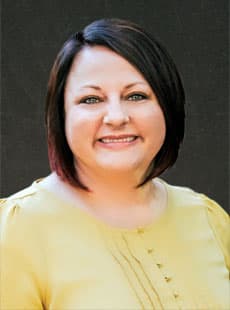Map Making
Main Core Tie
Social Studies - 1st Grade
Standard 1 Objective 1
Summary
Students will study a map of their school and then create a map of their classroom.
Materials
- Map of your school -- 1 per student
- My Classroompdf
- Classroom Furniturepdf
- Five to six small notebooks
- Pencils
Background for Teachers
Maps are all around us and we use them often throughout our lives. Students should realize maps represent a much bigger picture, and that they can make a map to represent many different things.
Intended Learning Outcomes
6. Communicate clearly in oral, artistic, written, and nonverbal form.
Instructional Procedures
Invitation to Learn
Have students play "I Spy" in the classroom. Before they begin, remind them to pick big objects in the room such as the teacher's desk, student desks, chairs, etc. You want them to focus on objects in the room that would be placed on a map of the classroom.
Instructional Procedures
- Introduce the situation of someone else coming in the room and wanting to find something. Ask students what you could give the person to help him/her find, for example, where the teacher's desk is, or where the reading table is.
- Discuss with students why we use maps and share with them a brief history of maps and how they were and are made. Share any books you may have about maps and how they are made.
- Give each of your students a map of your school and let them investigate it in table groups and discuss what they see. In a small group, let them play I Spy with the map and see if the others can find what they are looking for. They can use the vocabulary "I spy the office, can you?" The other students should locate and point to the correct spot on their map. At the end of the activity, gather students together and have them share the things they noticed on the map.
- Have each student take their map and go on a walk around the school with you. Point out different features on the map. Help students to understand that although the classrooms are big in real life, when placed on the map, they have been made much smaller.
- Bring your students back to the room and tell them they are going to make a map of the classroom.
- Have them list items they will include on their map (desks, chairs, books, tables, etc). Remind them when you look at a map, it's as if you are standing on the ceiling looking down, so objects on the walls won't show up as easily. You might want to show a model of a room (cardboard box with doll furniture, or building blocks made into a simple house layout, etc.) -- that the students can look down on and see a map you have drawn to represent the room as an example.
- Using a map of your classroom, similar to the My Classroom and the Classroom Furniture demonstrate for them how you would make a map of the classroom, making sure to discuss that many items have to fit on the map and therefore the items placed in the room have been made very small.
- After demonstrating, give students a map of the classroom and have children glue cutout, paper objects in the room according to how they really are. Let them wander around the room to be sure they have placed them in the right place.
Extensions
Reciprocal Treasure Hunting
- Have students bring a small treasure from home for a treasure hunt that they are willing to give to someone else to keep. You could supply small, simple items such as pencils, stickers, etc.
- Prior to the activity, hide five to six small containers filled with simple treasures and a small notebook. Place the containers throughout the school. Make maps leading to the small containers.
- Explain to the students that they are going on a treasure hunt, and that they are not only going to get treasure, but will also be able to hide treasure for someone else. They will also have the chance to write in the notebook that is included in the container, about their adventure.
- Divide students into five or six different groups. Give the first group a map of where a treasure that you have already hidden is. Send them to find it, with their map, and the treasure they brought with them. When they find the container, they take a treasure inside and replace it with the treasure they brought from home. Continue until all students have received a new treasure.
- This can also be extended to use as a whole class with other classes. Together, you can write the directions of where you hid the treasure, send them to another class to find the treasure, and then hide something for you to find.
Family Connections
- Have students make a map of their bedroom or house and return it to school and share. Discuss the differences between the rooms and houses and how they still serve the same function.
- Send home a map of the school, and have students list directions for getting from the classroom to another area in the school.
Assessment Plan
• Make a map of your classroom and place some objects in the
wrong place. Have students identify which items are in the
wrong place, and draw a line to where they should be placed.
• Given a blank map of the playground, have students draw in
where they would place the swings, slide, etc. to best serve the
"optimal playground."
• Collect maps they made and put in to students' portfolios to
show understanding.
Bibliography
Research Basis
Jitendra, A. (2002). Teaching students math problem-solving through graphic representations. Academic Research Premier. Retrieved November 28, 2006.
This author shares a study done on students with learning disabilities in regards to their mathematical ability. They found that students were much more successful using graphic representations than doing math the traditional way.
Bowers, S. P. (2005). The portfolio process: questions for implementation and practice. Academic Research Premier. Retrieved November 28, 2006.
In this article, we learn about the best practices the author found in introducing and using portfolios in your classroom as a tool of assessment. It also discusses some challenges that may occur while creating portfolios and some ways to handle those challenges if they occur.
Updated: 02/05/2018


 UTAH EDUCATION NETWORK
UTAH EDUCATION NETWORK

 Justin
Justin Braxton
Braxton Dani
Dani Kayla
Kayla Katie
Katie Matthew
Matthew Rob
Rob Val
Val
